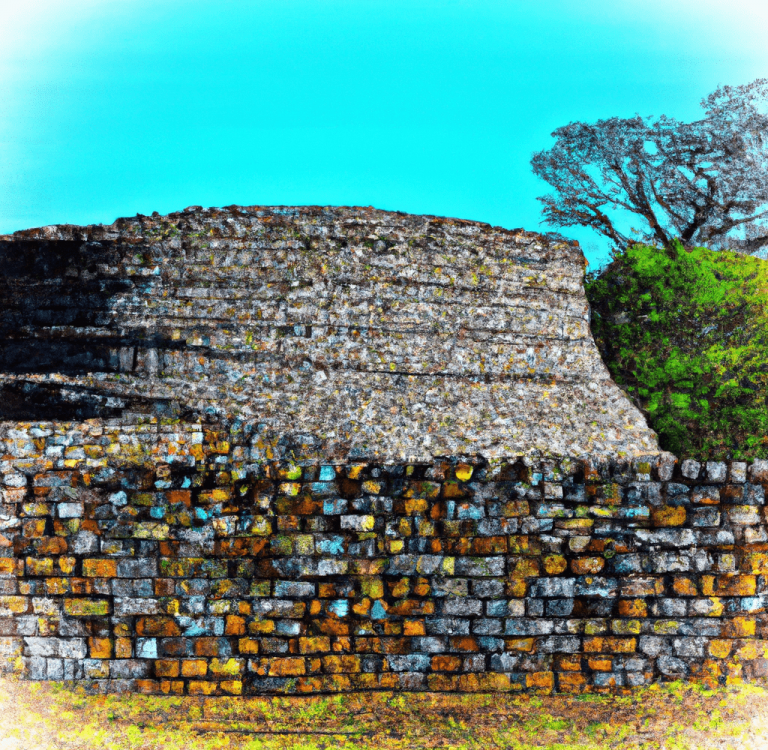The Temple of Sais, located in ancient Egypt, is a testament to millennia-old traditions. From 3000 to 525 BCE, this sanctuary wasn’t merely a spiritual hub; it also served as a pivotal centre for learning and possibly medicine. Dive into its rich legacy and unearth the stories it holds.

Several thousand years ago, nestled in the Western Nile Delta on what was the Canopic branch of the Nile, lay the enigmatic city of Sa, known in Greek as “Sais” (presently within the Gharbiyah governorate). Today, remnants of this ancient city can be found in a village named Sa-el-Hagar. Its name, translating to “Sa of the Stone” in Arabic, hints at a once grand city adorned with majestic stone edifices.
As the dawn of the Pharaonic era approached around 3000 BC, Sais became the spiritual heartland for the worship of the war goddess and creator, Neith. Distinctively, Neith, the patron deity of Sais, wasn’t just a guardian of its people but also a harmonizing force between humans and deities. What’s intriguing is her status as a female creation deity, an uncommon occurrence in Egypt. Symbolizing her prominence in Lower Egypt, she is often illustrated donning the Deshret red crown with the emblematic cobra of Wadjet. From 1000 BC onward, her temple in Sais became a sought-after pilgrimage site.

Several centuries onward, between 664 and 525 BC, Sais emerged as a prominent Pharaonic capital and a pivotal hub for the regal ceremonies of the 26th Dynasty. Roughly 150 years after this era, the Greek chronicler, Herodotus, painted a vivid picture of Sais: a majestic city dotted with magnificent temples, towering statues, and resplendent royal burial sites. He detailed the Sacred Lake of Sais, central to various rites, its waters deemed sacred for purification in the city’s temple. Notably, Herodotus narrated his experience of the Luminous Lamps Festival on this lake, where lamps – saucers filled with salt and oil with a floating wick – gleamed throughout the night. This ceremony, held on the 13th day of summer’s third month, was a tribute to goddess Neith.
Renowned Greek thinkers, such as Plato, Aristotle, and Diodorus Siculus, drew parallels between Neith and the Greek goddess Athena, hinting at a possible ancient connection to Athens. Diodorus even proposed that Athena might have founded Sais before the cataclysmic deluge that allegedly engulfed Athens and Atlantis. As per his account, while Greek cities perished, Egyptian ones like Sais remained untouched.

Sais boasts a legacy of a medical academy tethered to its temple, distinguished for its numerous female attendees and educators, especially in gynaecology and obstetrics. A significant figure linked to this academy is Pesehet. Predated only by Merit-Ptah (circa 2700 BC), she stands as one of history’s earliest known female physicians. Records highlight Pesehet as the mentor to midwives and her title, “Lady Overseer of Female Physicians,” underlines her stature and leadership. Another of her titles, “King’s Associate,” implies she might have been a royal physician. Pesehet’s contributions weren’t just in practising medicine but in shaping it and influencing her society. Considering archaeological findings, it’s evident that Pesehet holds the distinction of being possibly the first woman with a notable professional stature in ancient civilisation.
In the renowned dialogues of Plato, namely “Timaeus” and “Critias”, where he delves into the intricacies of the cosmos and humanity, it’s said that during Solon’s visit to Sais in 590 BC, he was regaled with tales of the fabled Atlantis. This included its military altercations with Greece and Egypt, its downfall, and its eventual obliteration due to divine wrath.
Sais was home to numerous astute rulers. A notable mention is King Nekau, who governed for a decade and a half during the 26th Dynasty. Under his reign, an expedition set sail that remarkably circled Africa. Furthermore, he set the foundations for a canal connecting the Nile to the Red Sea, which saw its completion under the aegis of the Achaemenid sovereign, Darius I.
Another influential figure from Sais was Psamtek (or Psammetichus III). He often found himself at odds with Persia. Soon after his ascent to the throne, the Persians, led by Cambyses, marched into Egypt around 525 BC. It’s documented that the onslaught saw many Egyptian edifices, including various temples in Sais, laid to waste.
Until the mid-1800s, traces of Sais’ glory persisted, with records mentioning a vast brick wall and a fortress. Regrettably, by the century’s close, much of its remnants were pilfered by treasure-seeking Europeans and local constructors, leaving scant vestiges of its grandeur.

A 1993 archaeological dig brought to light Sais’ capital locale and an adjoining industrial sector. Discoveries included Greek trade amphorae, cups, and Syro-Palestinian wine vessels, indicating the city’s vibrant trade networks. Further excavations unveiled artefacts dating back to around 1100 BC, painting a picture of a prosperous agricultural community. Unearthed dwellings showcased ovens, storage spaces, greeting areas, and open squares. Evidence was also found of their reverence for a local serpent deity named Wadjet – interestingly, the same serpent represented on the Deshret crown donned by the goddess Neith.
It’s widely believed that the monarchs of Sais found their final resting place within the city, yet their burial sites remain elusive. Currently, the Egypt Exploration Society is championing a comprehensive examination and archaeological evaluation of the area. Although the site might seem sparse in terms of visible relics, the hints and traces present suggest a trove of hidden treasures and mysteries yearning to be unveiled in the historic royal grounds of Sais.
Sources
“The Story of Pesehet.” Think Africa. https://thinkafrica.net/sais-story-of-pesehet/. Accessed [22.10.23].
The Gods of the Egyptians: Vol 2″, E. A. Wallis Budge, p. 220-221, Dover ed 1969, org pub 1904, ISBN: 0-486-22056-7
Medicine in the Days of the Pharaohs, Bruno Halioua, Bernard Ziskin, M.B.DeBevoise. ISBN: 978-0674017023
Penelope Wilson, The Survey of Sais (Sa el-Hagar), 1997-2002 (Excavation Memoir 77, Egypt Exploration Society, London 2006). ISBN: 978-0856981753



